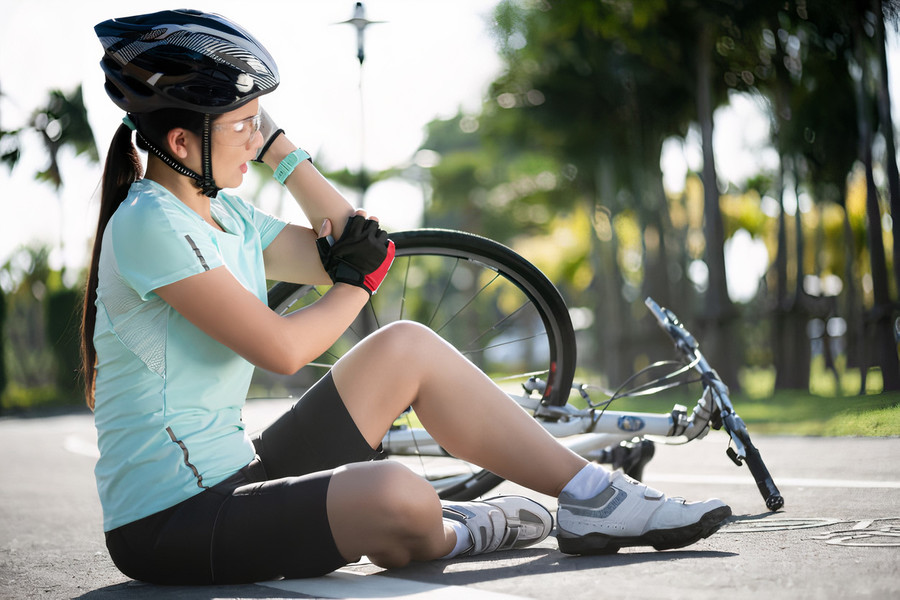What Is Tegaderm And How Do You Use It Properly?

What Is Tegaderm?
If you've ever accidentally fallen off a motorcycle on the road and your skin scraped against the ground, then you know what road rash is like. Tegaderm for road rash is a useful bandage that will help the healing process and prevent infection from occurring.
Road rash can take a couple of different forms:
-
Scrapes
-
Abrasions
-
Broken skin
-
Skin with debris from the road lodged in it
Road rash typically happens with motorcycling, skateboarding, rollerblading, and cycling.
How To Treat Road Rash
There are a couple of steps you'll want to take when dealing with road rash.
-
First, you'll need to inspect your wound. If you see a bone or if it looks quite severe, then you should head to the emergency as soon as possible. Sometimes road rash wounds will require stitches, and that's why heading to the emergency is the best option when flesh and bone are visible to the eye.
-
If you don't think that it requires a visit to the emergency, you'll need to give the wound a good clean. Ensure that you're not rubbing the skin because that can make things worse. A wound cleanser is the best way to properly clean out a wound. If you don't happen to have a wound cleanser handy, you can use some distilled bottled water instead. All of the debris and dirt need to be cleaned out of the wound before you proceed.
-
Look for any debris that's lodged into the skin. Sometimes road rash can really push tiny pebbles and dirt into the bed of the skin. If you don't get all of the dirt and debris out of the wound, then the further infection could potentially occur. Tweezers are the best way to get rid of any dirt in a wound. But you have to make sure the tweezers are sterile and sanitized.
-
Next, you'll want to stop the bleeding. Get a non-adhesive sterile gauze and then hold it against the wound very delicately. You'll want to hold it there until you notice the wound stops bleeding. Once it stops bleeding, get an antibacterial spray and spray it on the wound. After that, give it a good chance to dry off.
-
To dress the wound, Tegaderm patches are the ideal solution. Tegaderm will lessen the chances of infection occurring and will allow the road rash to heal efficiently. Tegaderm is great for placing over wounds and keeping infection out at the same time. If your wound happens to be bigger than the Tegaderm patch you're using, you can just get a second one and overlap the two so that the entire wound will be covered up.
Tegaderm For Road Rash
Tegaderm will keep the wound bed in a moist environment, and this is exactly what a wound needs to heal. A moist healing environment will also prevent scarring on the skin from happening. Road rash typically occurs in areas of the body that are bonier and less protected like elbows and knees. The downside to road rash is that when a wound from road rash scabs over, sometimes moving around can cause the scab to crack open again. This can lead to pain and further infection. Tegaderm lowers the chances of that from happening by keeping the environment of the wound soft and moist.
How Long Should You Keep Tegaderm On For?
Every wound is different from each other, but the average rule of thumb is to keep Tegaderm on for three to six days after initially applying it to the wound. The great thing about Tegaderm is that you can see the wound underneath the bandage. This is a huge bonus because it allows you to monitor the healing progress of the wound without actually having to remove the bandage at all. If you happen to see more draining, you'll want to swap over to a new bandage.
It's good to keep in mind though that Tegaderm's job is to keep a wound moist so that it has a better chance of healing. The fluid that results from a wound will typically be a clear or yellow color. If you start noticing a green and bad-smelling odor coming from the wound, then it might be infected. Keep an eye on your symptoms. If you start noticing a lot of redness and swelling around the wound and have a fever, these are symptoms that reveal an infection. In that case, you should see a physician as soon as you can to resolve this issue.
If you have any questions or concerns, it's best to seek out medical advice. Putting your health at risk is a critical concern, and aiming to resolve your health complications should always be your first priority.


